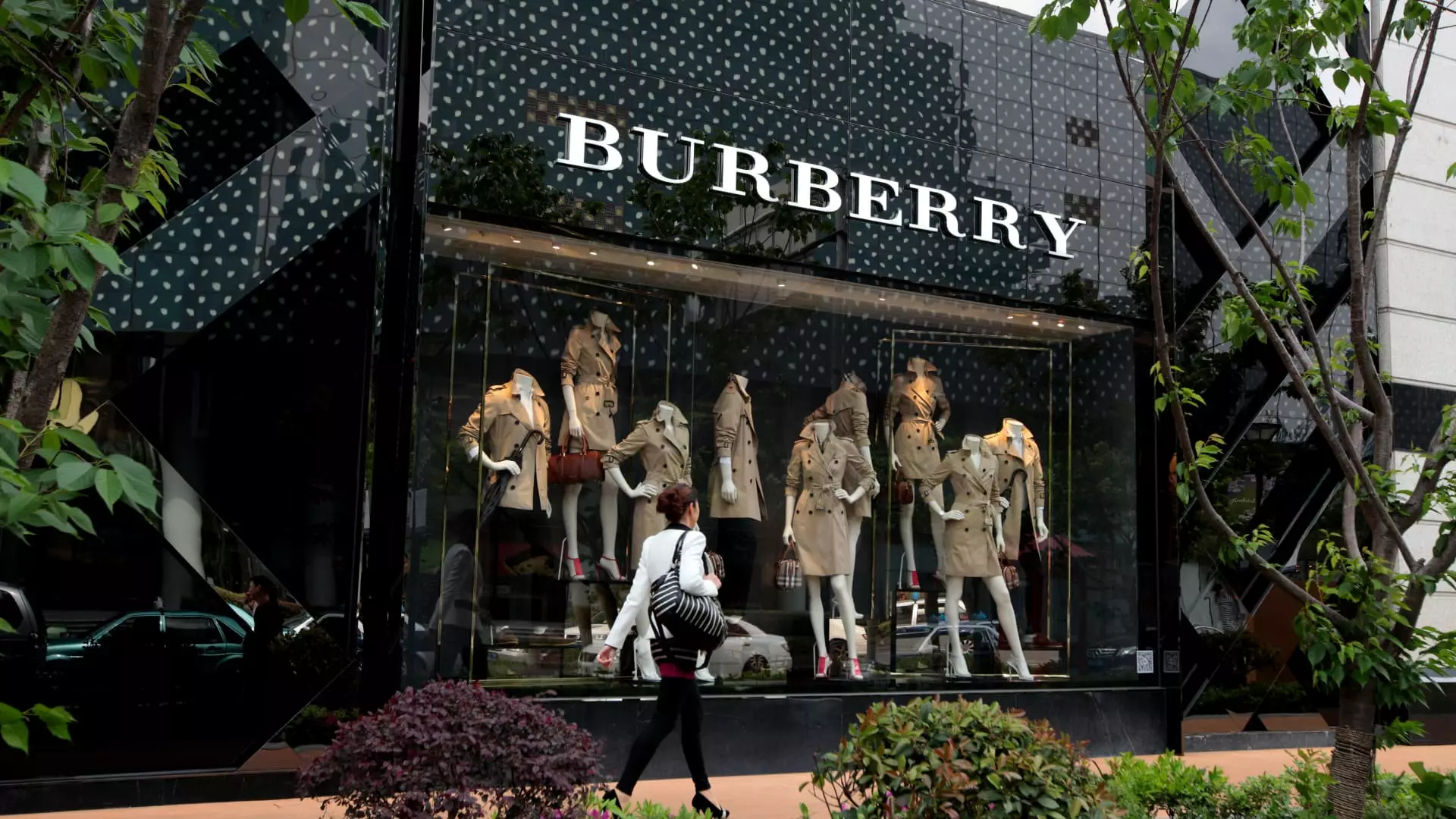In recent times, the luxury fashion landscape has seen significant shifts, driven by evolving consumer preferences and an increasingly competitive marketplace. Burberry, a name synonymous with classic British elegance, finds itself at a crossroads. The fashion house has announced a significant strategic overhaul, dubbed “Burberry Forward.” This initiative aims to rekindle consumer interest by re-emphasizing its roots in heritage designs while concurrently modernizing its product offerings. By narrowing its focus on iconic items like trench coats and scarves, Burberry is positioning itself to connect once more with its loyal clientele, which has strayed in recent years.
The decision to revert to these staple products seems to be a response to a broader decline in sales, representing a confluence of both internal strategic missteps and external industry-wide challenges. In a bid to realign itself with its identity, Burberry’s plans speak to the core of luxury branding: authenticity and prestige. New CEO Joshua Schulman took the helm with a promise of strategic clarity intended to reinvigorate the brand’s identity, as it attempts to overcome a staggering 39% decline in stock value for the year.
Schulman’s keen insight into Burberry’s recent misalignments highlights a crucial issue: the brand had deviated from its core competencies, favoring niche products over its most emblematic offerings. He emphasizes the necessity of a more disciplined approach to product selection, one that prioritizes quality and heritage over the fleeting allure of trends. Analysts are optimistic about this shift, viewing it as crucial in establishing a stronger retail presence amid predictions of a 2% slump in the personal luxury goods market.
The commitment to stabilize Burberry’s performance and cultivate sustainable growth signifies a turning point for the brand. With its new framework, Schulman aims not only to rejuvenate Burberry’s market standing but also to spark consumer desire once more, restoring faith in what has historically been a reliable symbol of class and sophistication. Indeed, a strategic emphasis on outerwear and traditional craftsmanship could well prove to be the antidote for Burberry’s struggles, delving deep into the heritage that initially crafted the brand’s identity.
The response from market analysts has been predominantly positive, with many suggesting that Burberry’s new direction marks a significant pivot from previous miscalculations. RBC Capital Markets analyst Piral Dadhania expressed that refocusing on heritage and outerwear fosters greater authenticity in the current market. With fewer players offering high-quality luxury outerwear, this strategy creates a unique space for Burberry, potentially granting it a competitive edge.
Moreover, analysts like Mamta Valechha from Quilter Cheviot herald the revamp as a critical moment for Burberry amid a tumultuous period. Yet, there remains an undercurrent of caution, as strategic execution will be as vital as the vision itself. For instance, the success of Schulman’s plans hinges on a harmonious alignment between his business insights and the creative capabilities of the brand’s design team. There is an implicit understanding that luxury fashion operates on the fine balance of creative expression and market demands.
Schulman’s strategic vision indicates a potential inspiration drawn from other luxury brands like Louis Vuitton, which effortlessly merge high-end artistic collections with essential items accessible to broader demographics. This duality is essential for Burberry as it strives to resonate with aspirational consumers without alienating its loyal base who cherish its British heritage.
Changes in design, assortments, pricing, and communication pave the way for a fashion overhaul that reflects current market sensibilities while maintaining the legacy associated with the brand. Schulman’s approach appears well-timed, especially given the recent market volatility, and the willingness of investment firms like Bernstein and HSBC to adjust their ratings positively on Burberry speaks volumes.
Burberry’s attempt to navigate back to its roots could represent a transformative chapter in its storied history. The success of the “Burberry Forward” initiative will be pivotal, as the brand seeks to engage both new consumers and re-establish connections with long-time admirers. By prioritizing authenticity, quality, and heritage, Burberry stands at the brink of a potential revival. If Schulman can effectively integrate these elements into a coherent strategy, Burberry may very well regain its illustrious position in the luxury fashion sector. The upcoming months will be critical, as the brand endeavors to turn its vision into tangible results, steering it towards a brighter future.

